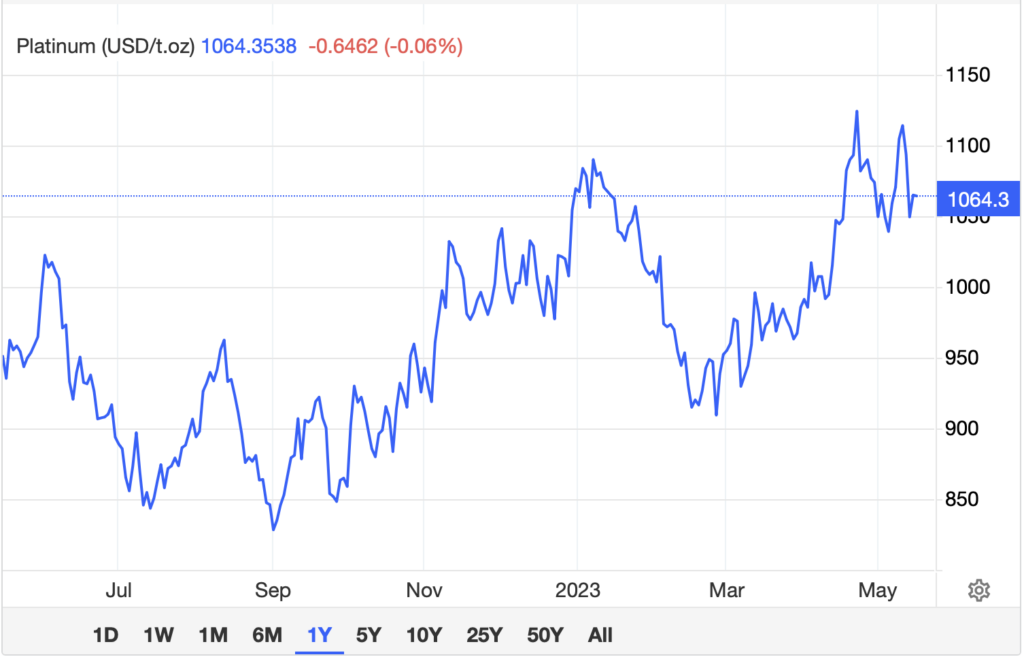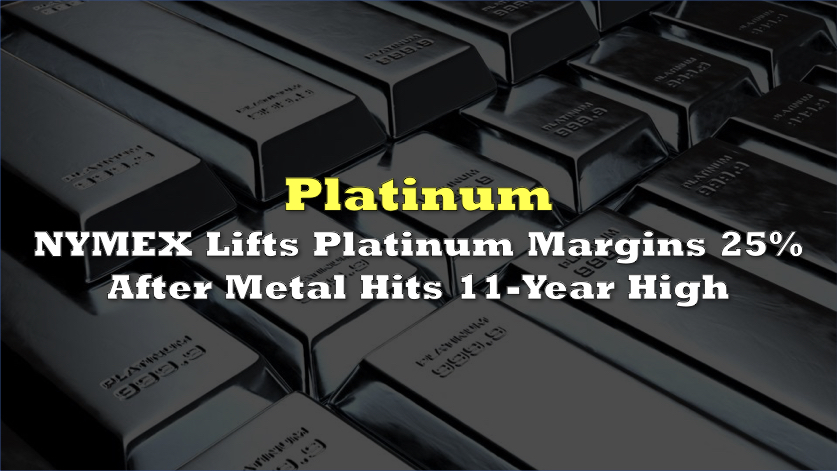The platinum market is expected to run a nearly one million ounce deficit in 2023, owing to increased demand from the investment sector and limited supply from South Africa.
The World Platinum Investment Council (WPIC) now forecasts a deficit of 983,000 ounces this year, following a surplus of 854,000 ounces in 2022. After investors rushed in, global platinum demand is expected to rise 28% this year to 8.2 million ounces, owing to strong industrial use and increased usage of the metal in automobile catalytic converters in the first quarter.
"The World Platinum Investment Council now expects a deficit of 983,000 ounces this year, after a 854,000-ounce surplus in 2022." #platinum https://t.co/l265khm6iH
— CEO Technician (@CEOTechnician) May 15, 2023
The industry association predicts an increase in demand from the investment sector, as well as automakers and industry. It stated that investors were looking to precious metals as a hedge against inflation and economic uncertainty, and that automakers were swapping platinum for palladium in autocatalysts.
“It would be a record deficit in ounces since records going back to the 1970s,” said Edward Sterck, director of research at WPIC.
As supply in South Africa dries up and China’s industrial expansion accelerates, this might be the metal’s greatest shortage since records began in the 1970s.
Platinum prices have risen over a fifth since their February low, to $1,080 per ounce, and are now higher than the five-year average of $940 per ounce. The increases have prompted fund managers to look to exchange traded funds that track the market and are backed by physical metal holdings.

The deficit is a sharp contrast to the bumper surplus of the previous two years, when automobile production was hampered by semiconductor shortages.
Platinum is used in catalytic converters, which minimize hazardous emissions from vehicles, as well as glass fiber for wind turbines, electronics, and petrochemical industries.
In the short term, producers think tougher pollution regulations will sustain demand, but in the long run, it’s unclear if increasing demand from the hydrogen economy will overcome the phase-out of combustion engine vehicles.
READ: Power Nickel Intersects 20.76 g/t Platinum Over 7.75 Metres At Newly Discovered Zone
The prognosis comes as the industry gathers in London for Platinum Week. Power supply concerns in South Africa, which provides for 70% of worldwide supply, are likely to be highlighted.
The banking crisis in the United States meanwhile has pushed investors to seek out precious metals, and South African fund managers have shifted from equities to holding platinum-backed ETFs, according to industry sources.
Despite concerns about a worldwide economic slowdown, WPIC thinks that industrial demand for platinum in 2023 will be the highest ever, owing to chemical and glass plant expansions in China, as well as the continued substitution of platinum for palladium in auto exhausts.

Other forecasts disagree with the WPIC’s optimism. Johnson Matthey, the London-listed catalyst technology business, forecast softer demand growth – 20% this year — but still expected a shortage of roughly 130,000 ounces in a separate projection published on Monday.
Because of prior years of bountiful supply, sufficient inventories of 3.8 million ounces have been built up to meet demand, but as those draw down, prices are likely to climb and become more volatile.
However, a seismic shift has occurred in which around 85 percent of material is stored in China, where Sterck claims it is “captive,” up from less than 5 percent four years ago.
Information for this briefing was found via Financial Times, The Wall Street Journal, and the sources mentioned. The author has no securities or affiliations related to this organization. Not a recommendation to buy or sell. Always do additional research and consult a professional before purchasing a security. The author holds no licenses.









